Designed by Trees
The art of wood in furniture
I went to two very different art exhibitions recently, both starring trees.
Andy Goldsworthy’s Wood Line at the Presidio park in San Francisco looks like a twisty footpath in the middle of a forest. This blink-and-you’ll-miss-it installation is so overgrown that I struggled to understand what the “art” was. Is it the logs on the edge of the path, made from fallen trees and laid out with military precision? Or is it the path itself, meandering down the slope like a snake? As I listened to the wind rustling through the swaying trees and caught a glimpse of the sky through the forest canopy I realised perhaps this was the “art” - pondering the point of it all had made me more aware of nature than ever before.
Eight thousand kilometres east from San Francisco, an impressive sculpture of a tree stands proud outside the Serpentine Gallery in London’s Hyde Park. Albero Folgorato by Giuseppe Penone is a life-sized bronze cast of a hundred-year old willow tree that had been struck by lightening. Gold leaf lines the internal pulp of the trunk where it had been split open by the explosive force, an evocative portrayal of nature’s awesome force.
These two artworks may depict nature - and trees in particular - in very different ways, but they show how trees have long inspired artists. This fascination is shared by furniture designers, not least because trees yield one of the most important and versatile materials for making furniture. Where passion for the form of the tree is combined with deep respect for wood as a raw material, great design is sure to follow.


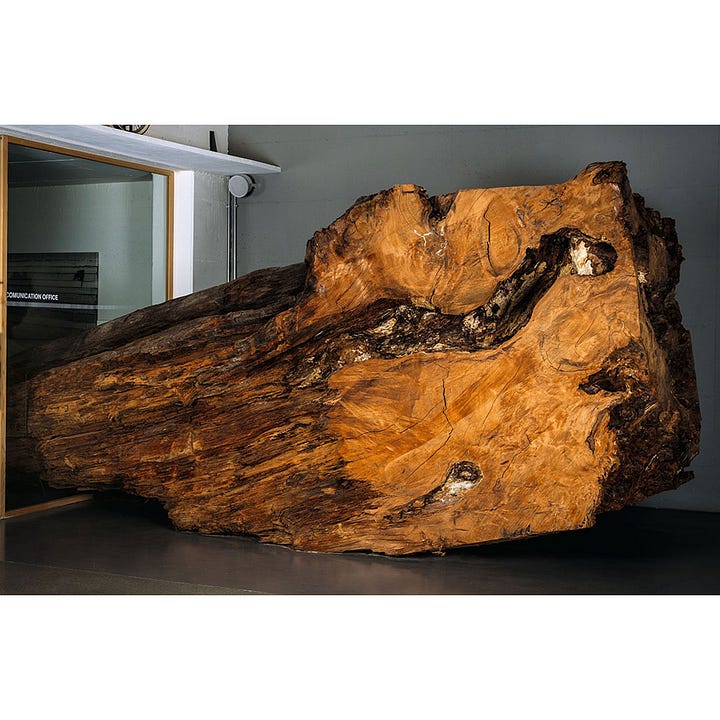
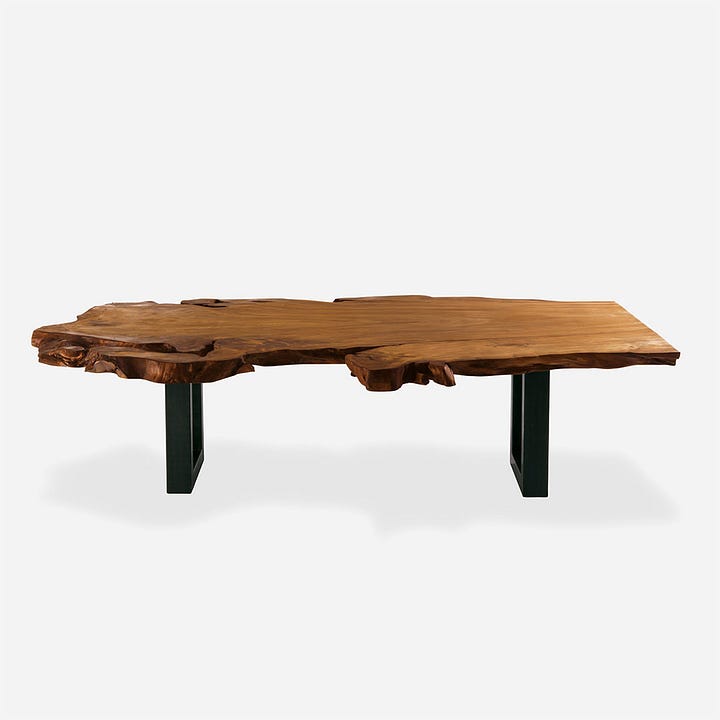
The tables made from Kauri slabs by Riva 1920 has a valid claim to be the grandaddy of tree-inspired furniture. Kauri is a monumental conifer that can reach over 70 metres in height. Originating from the Jurassic period, these majestic trees can only be found in New Zealand and are strictly protected from felling. Riva 1920 harvests fallen Kauri trunks from peat bogs, where they have been preserved for up to 50,000 years. Portions of these trunks are sliced into planks which are then painstakingly processed, with cavities filled in with transparent resin. Used as tabletops, they celebrate the natural shape and imperfections of the original slabs, each one a unique and exquisite fossil of trees from millennia past.
Wood knots are usually considered to be imperfections, but not for Netherlands-based Japanese designer Sho Ota, who delights in showcasing the raw beauty of wood knots. His According to the Grain collection of stools and tables are carved out from blocks of timber with the wood carefully chiselled away, leaving the wood knots protruding as if they were growths of new branches. These works provide a rare glimpse into the inner workings of trees in an intimate and almost anatomical way.


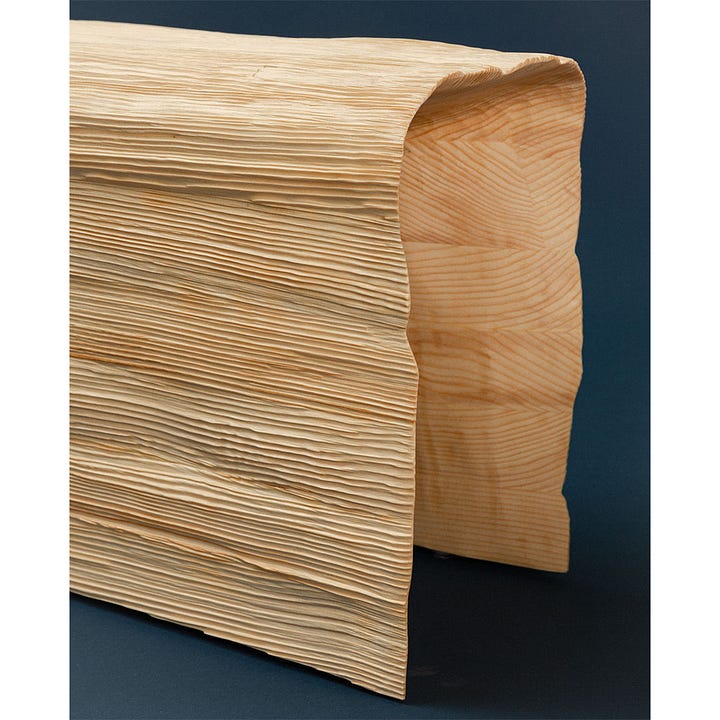
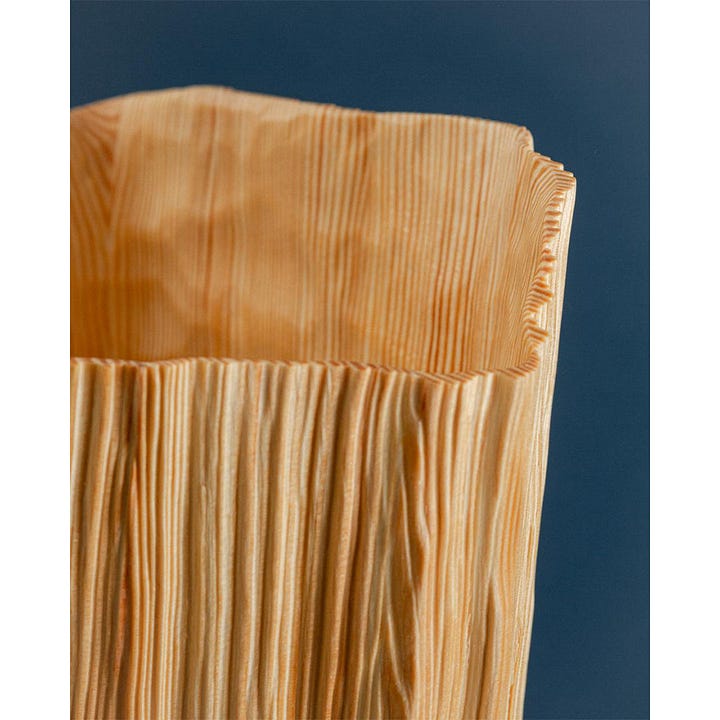
The works of Didi Ng explore the expression of wood. After noticing that the grains of common firewood run straight, he developed the technique of cutting the wood along the grain in thin strips which are then joined together with the woodgrain patterns looking almost like pleats. The resulting Wood Pleats collection of furniture and vases have an otherworldly quality, combining the appearance and texture of trees with the delicate drape of fabrics.
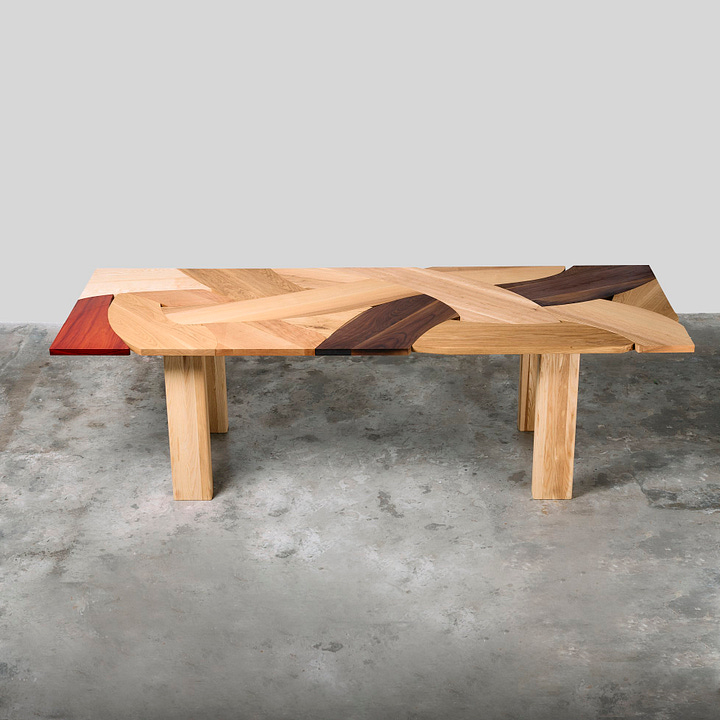

The Patchwork Table from Zeitgeist.limited features five varieties of wood: ash, cherry, maple, oak, padauk and walnut. Unusually, their source material is deadstock wood - offcuts in odd shapes and sizes that are usually discarded. The pieces are put together like a puzzle to create a patchwork effect tabletop. Even more unusually, the gaps between the different segments are on proud display. This not only minimises wastage but also serves as a visual reminder that although often regarded as a homogenised commodity, wood originates from nature in all its irregular glory.
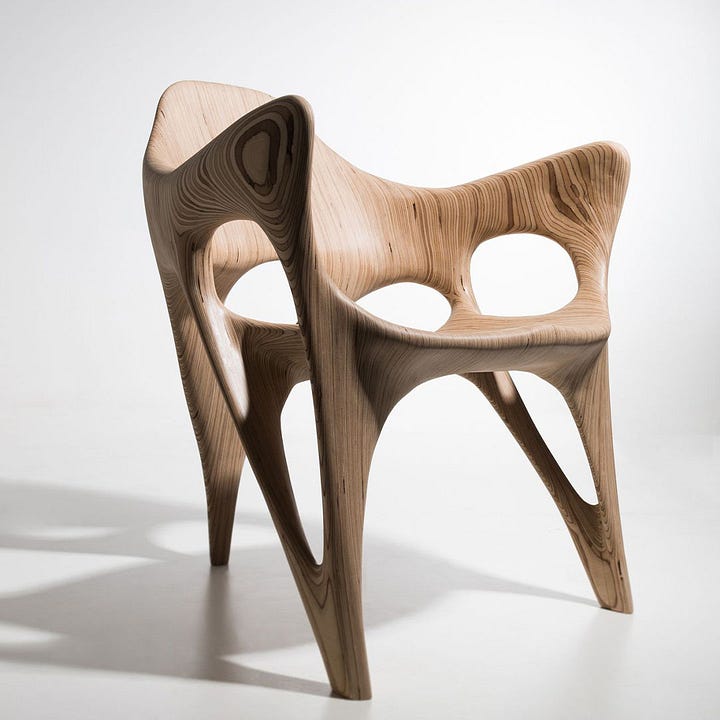
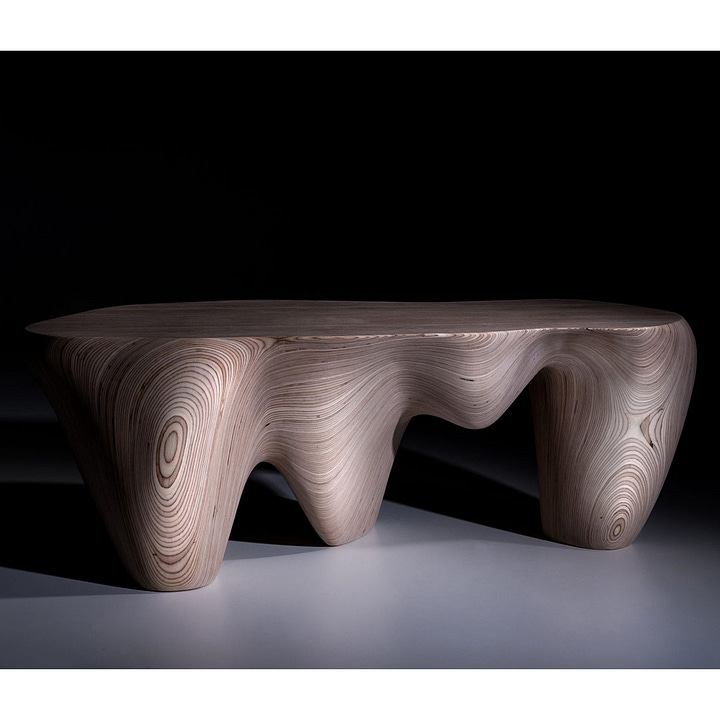

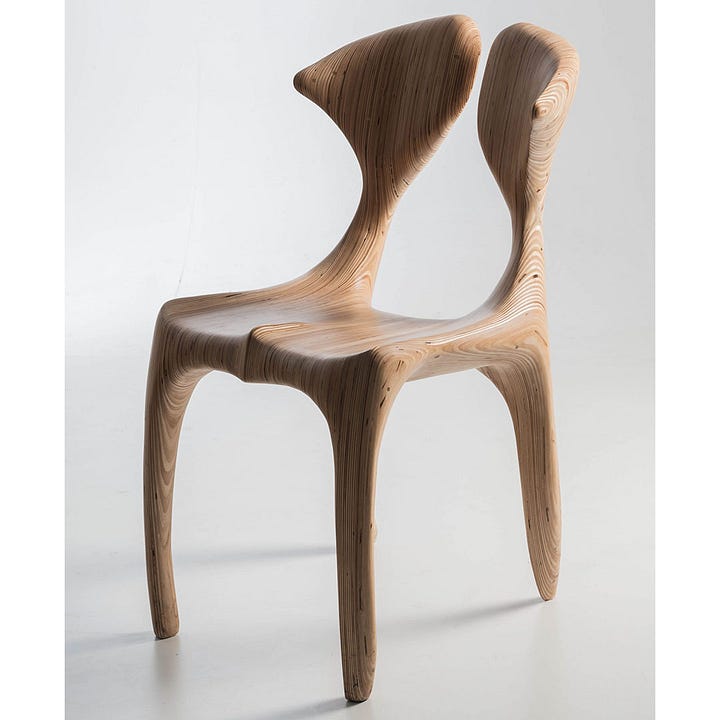
Plywood is largely seen as a utilitarian material, but in the hands of Polish designer Cyryl Zakrzewski it has been turned into veritable works of art. Inspired by the forests outside Poznan where he used to explore as a child, he sculpts blocks of plywood to create beautifully organic shapes which look as if they were natural extensions of trees. The layers of wood which made up the plywood are reminiscent of the rings of tree logs or perhaps the waves of the sea, an evocative way of returning a highly processed material back to its natural roots.
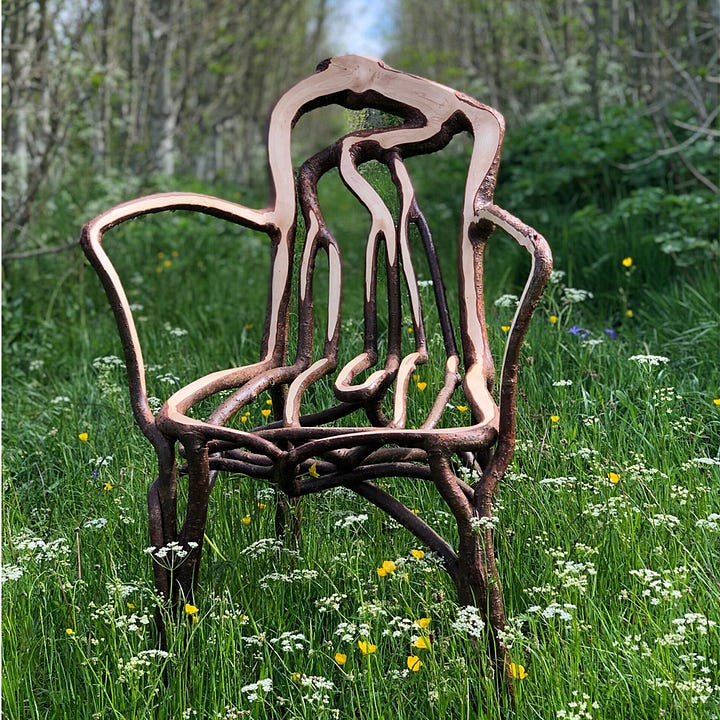

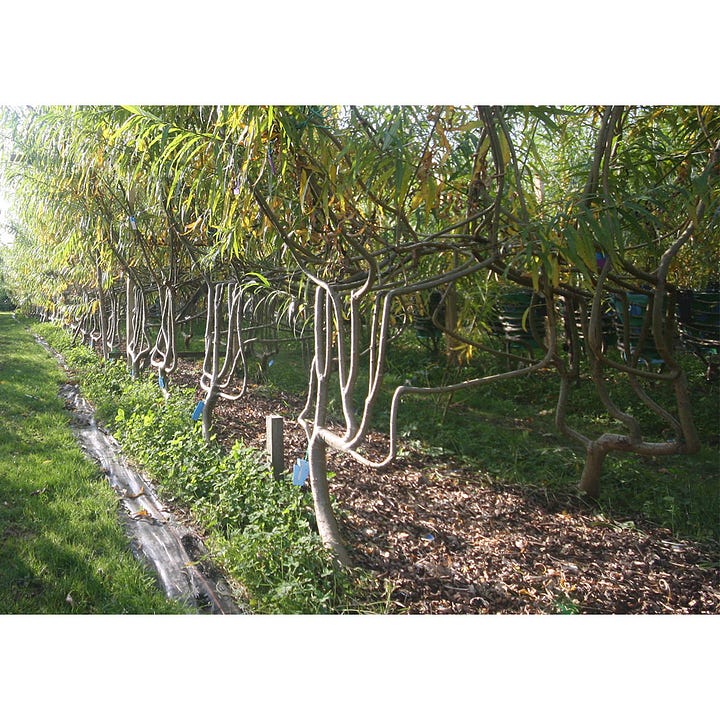

What better tribute to the beauty of trees can a furniture designer pay than to cultivate a tree in the form of a chair? This may sound outlandish but is exactly how Alice and Gavin Munro create their Full Grown collection of furniture. “Production” is from a 2.5 acre plot of land in the Peak District in the UK, where trees are planted and encouraged to grow into specific shapes using formers and a spot of strategic grafting here and there. Inspired by bonsai, the process is cruelty-free (the trees won’t grow in the specified direction if it is not happy to do so) and entirely organic. Customers who bemoan long lead times for custom furniture orders will be shocked to hear that it takes up to 10 years to “grow” a chair. Their patience will be amply rewarded, as the Full Grown chairs are unlike anything you can find in a furniture shop. Not only do they highlight the shape and textures of the trees, the chairs themselves are also very strong as each one is grown as a solid piece of timber with no joints or connections. This form of human-arboreal collaboration is perhaps the least wasteful and most poetic way to turn trees into furniture.
For furniture and lighting inspired by trees and other wonderful things from nature, visit us at www.do-shop.com.







Beautiful !!!
🌳
Great piece. As someone who loves this type of art/furniture, it provided nice food for thought.